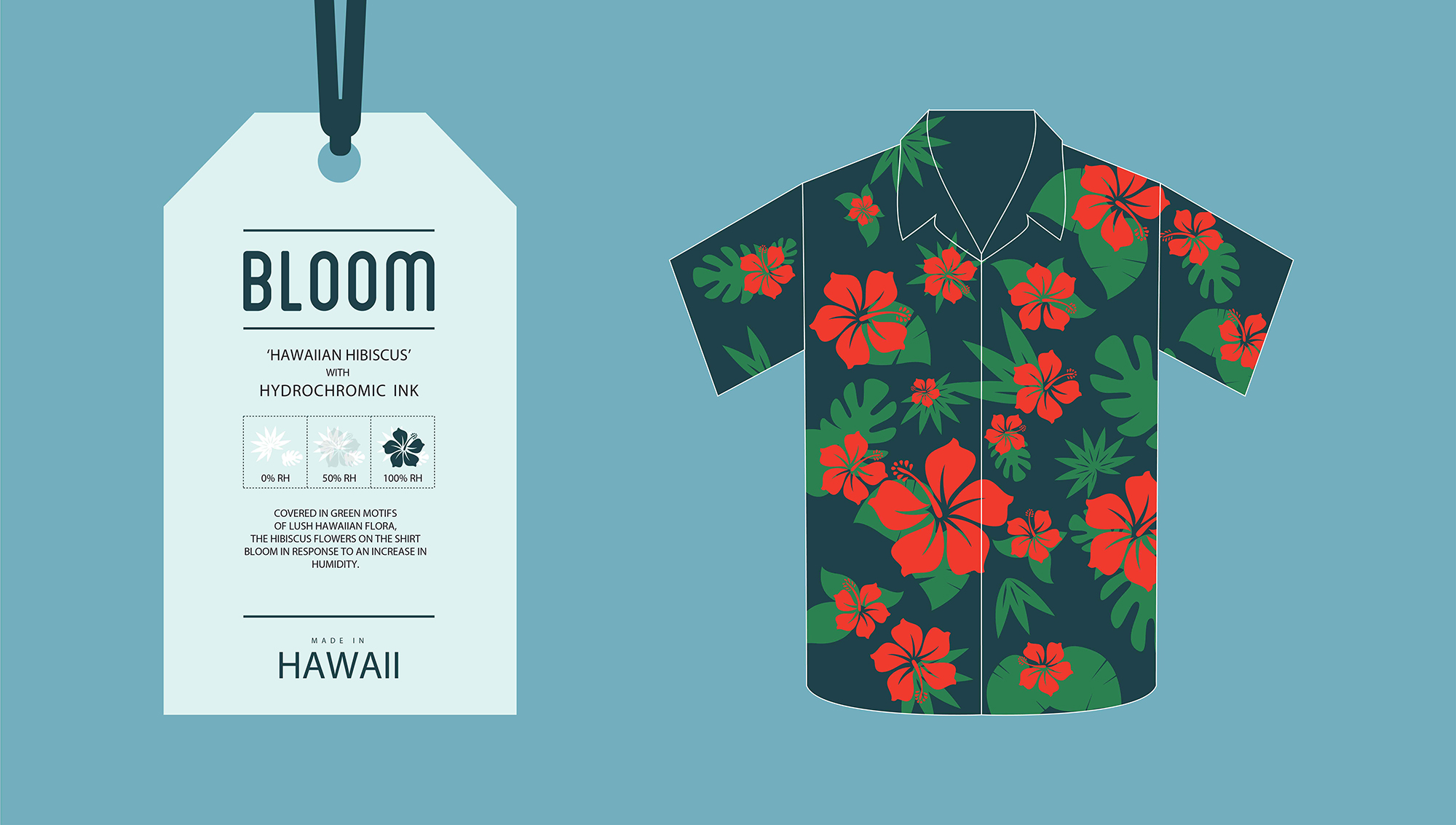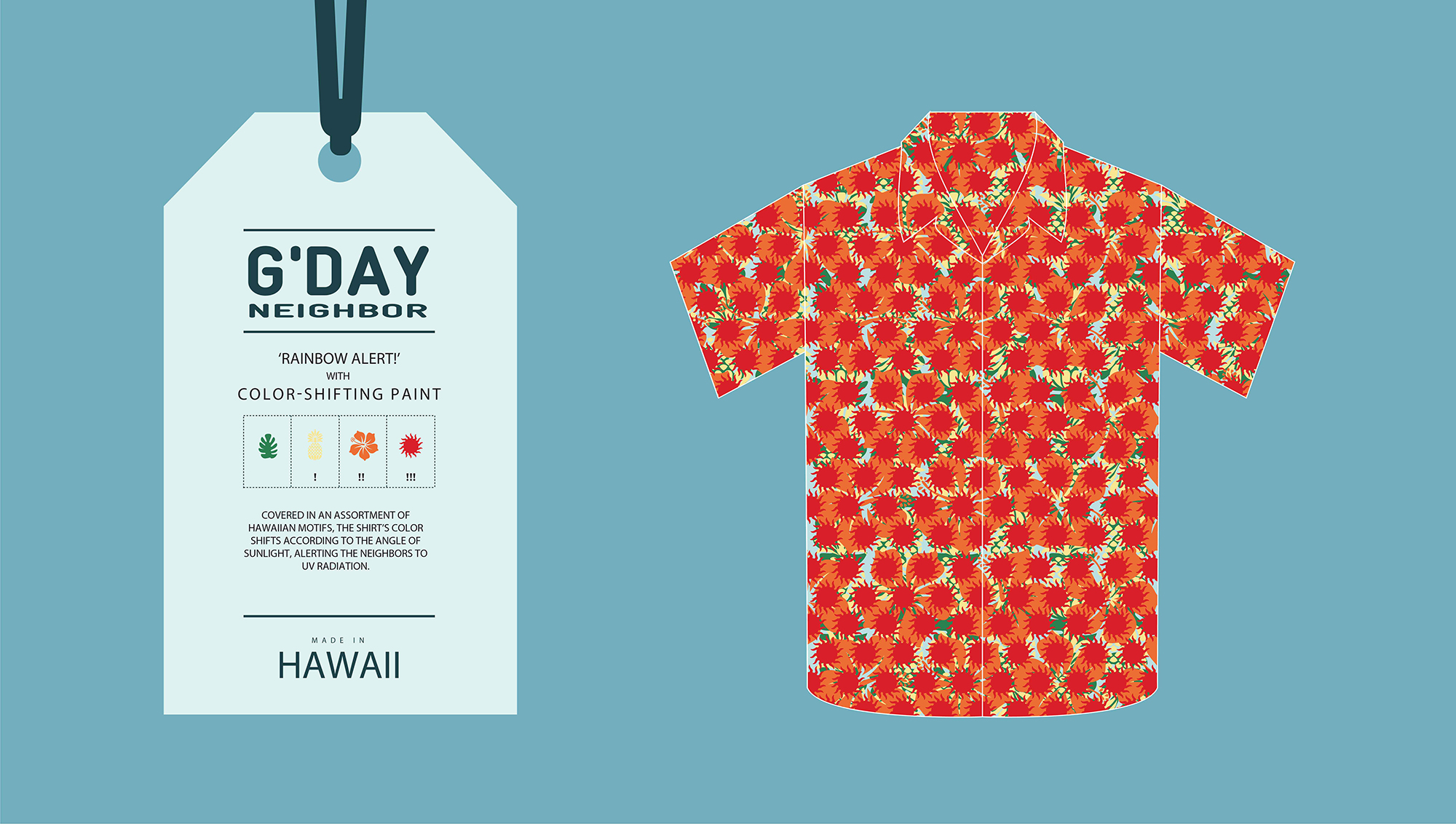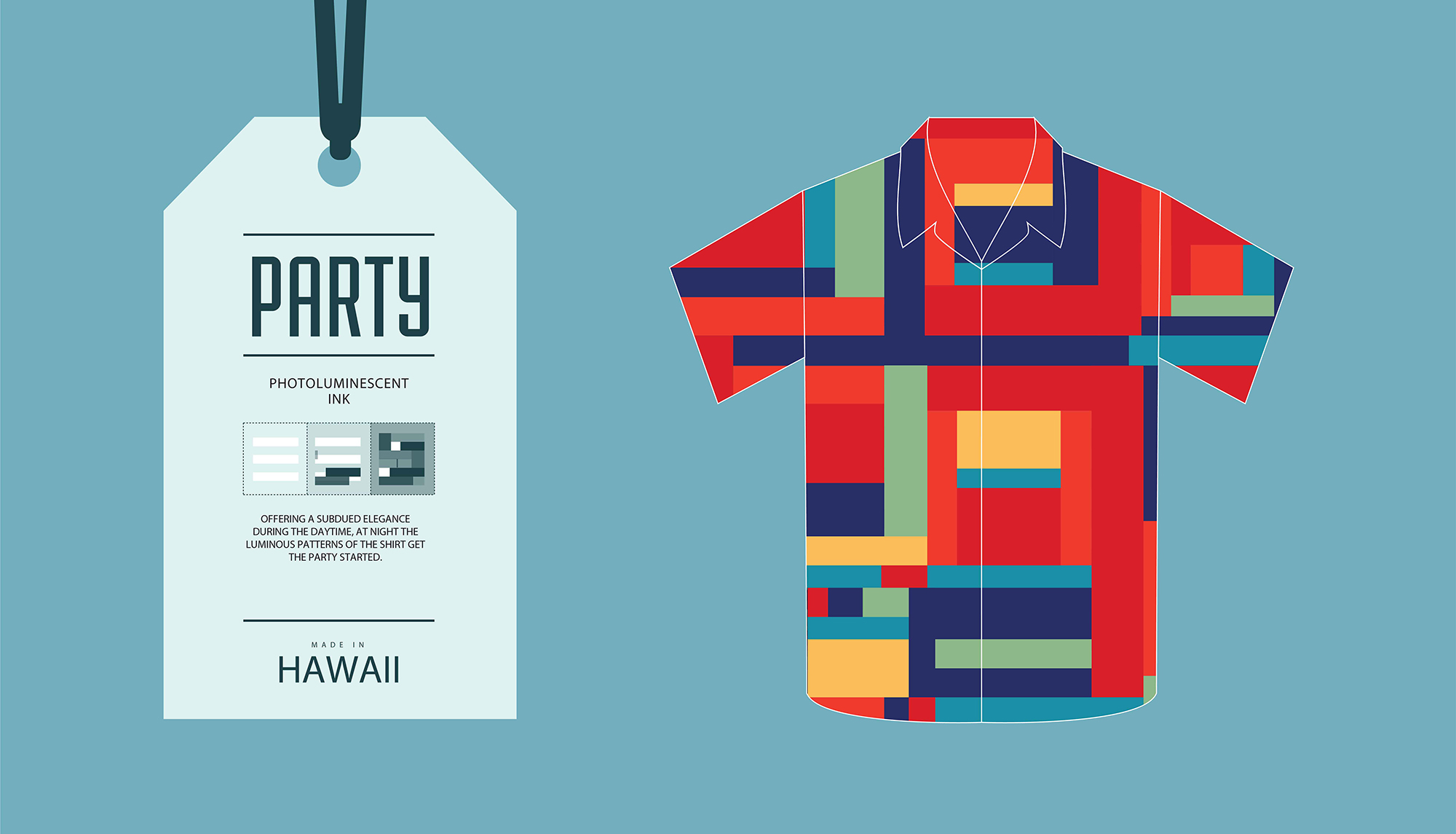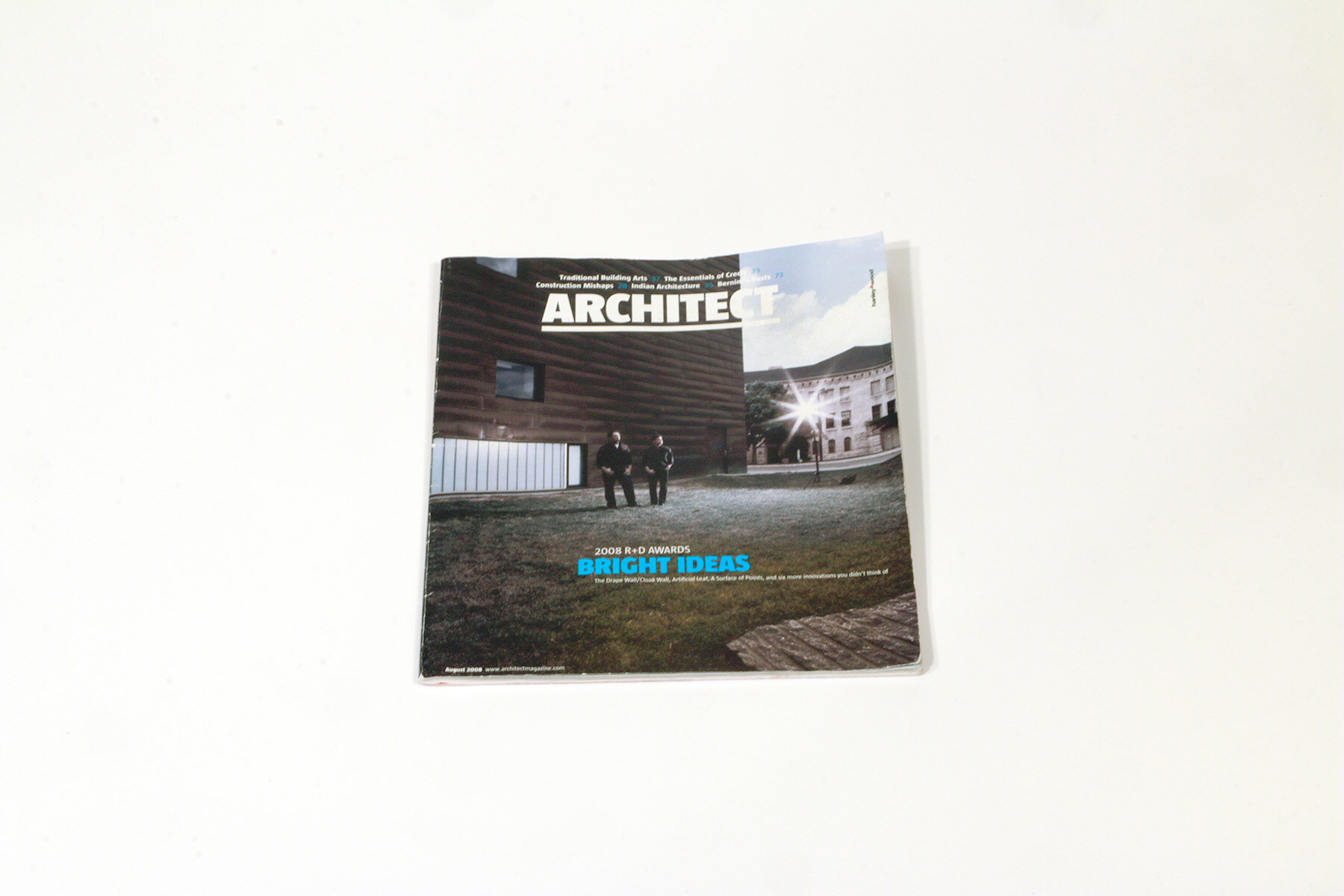Aloha Evolution
Watch Aloha Evolution Below!
In 2015, Daniel Friedman, PhD, FAIA, Dean of Architecture at the University of Hawaii at Manoa, and former President of the American Collegiate Schools of Architecture (ACSA) invited HouMinn Practice to produce a gallery show about the body of our research output. As part of that effort, Dean Friedman asked us to redesign an iconic Hawaiian garment - the Aloha Shirt. The Aloha shirt has a rich history and layers of acquired meaning. For Hawaiians, the shirt is a cultural icon. For visitors, it signifies a trip to Hawaii and a strong connection to island culture. It can be a symbol of conspicuous consumption or an endorsement of a relaxed lifestyle. The Aloha Shirt is associated with warm weather and easy times. Perhaps wearing it communicates a longing for both.
The Aloha Shirt surfaced in the 1930’s and was originally sawn from old kimono fabric to make garments to sell to tourists. It did not take long for these ornate and colorful shirts to be incorporated into local dress culture. They are very common on the islands and can be worn casually or as formal wear. What if we expected the shirt to do more than broadcast our consumption of the Hawaiian experience? What if the Aloha Shirt was required to perform? What if the Aloha shirt were to evolve? This examination of the Aloha Shirt is made using performance-based materials as an agent of evolution. We are interested in exploring how the shirt can evolve without losing its cultural grounding. We will use the design logic and ornament of the Aloha Shirt as a point of departure.
We became interested in the potential of clothing to do more. Aloha Evolution offers a few ideas for a redesigned Aloha Shirt, but in a broader sense, it is a speculation on new possibilities for clothing. If allowed to evolve and take advantage of a variety of material advances, clothing could become a new dermal layer, insulating, informing, warning, protecting, exposing, or concealing. It is exciting to contemplate how these behaviors could lead to a new type of architecture. Like the evolved Aloha Shirt, the house could change from season to season, sun to storm, and in response to the varying needs and desires of its inhabitants. Cumbersome and resource intensive traditional building materials become extinct and static walls become dynamic skins.
HouMinn Practice + Animation Production: Lörinc Vass (Research Assistant), Graphic Coordinator: Kara Verbeek (Research Assistant), Character Design: Nicole Sylvia (Research Assistant), Animation: Daichi Yamashita (Research Assistant), Adriene Young (Research Assistant), Design Research: Catherine He (Research Assistant), Narration: Tracy Satterfield
Exhibited at the
Haigo and Irene Shen Architecture Gallery
The University of Hawaii, Manoa
Honolulu, Hawaii
Apr 27 - May 20, and Aug 26 - Sept 20, 2015
Tags: Fabrication, Prototype, Fabric, Clothing, Materials










